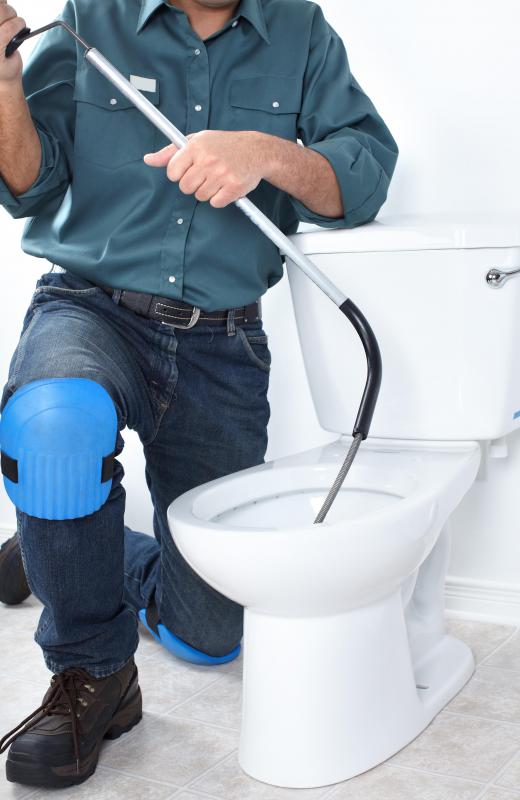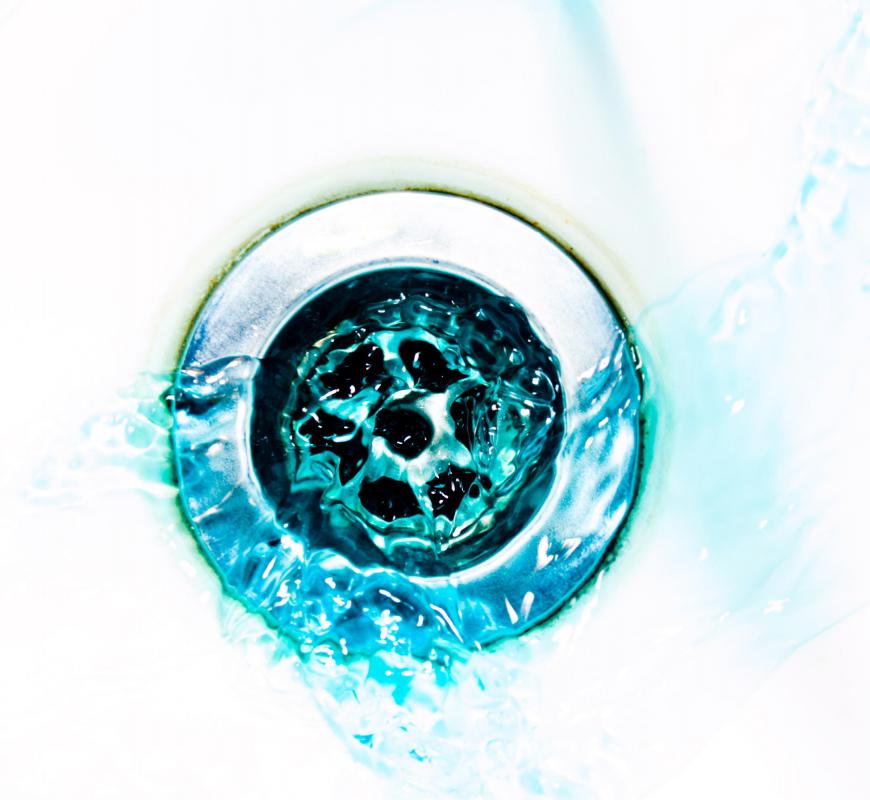At WiseGEEK, we're committed to delivering accurate, trustworthy information. Our expert-authored content is rigorously fact-checked and sourced from credible authorities. Discover how we uphold the highest standards in providing you with reliable knowledge.
What are the Best Tips for Drain Cleaning?
Drains are the workhorse of the plumbing system. Wastewater and flushed waste pass through the drains and empty into the sewer or septic system. Drains can become clogged with built-up grease, hair, food particles and waste material. You can keep your drains clean and clear by using a home drain cleaning concoction of baking soda and vinegar each month. If your drain is clogged, skip the toxic chemical drain cleaners and reach for the plunger or, for seriously clogged drains, a plumbing snake.
The best drain cleaning practice for maintaining a clean, open drain and avoiding clogs is a mixture of baking soda and vinegar poured monthly into all sink drains. One cup (237 mL) of baking soda poured into the drain followed by 1 cup (237 mL) of hot vinegar and 3-4 quarts (2.8-3.8 liters) of very hot water causes a chemical reaction that pushes sediments down the drain trap. Baking soda also absorbs odors, and the acidic properties of vinegar attack some of the hazardous pathogens in the pipes. This recipe is beneficial for unclogging drains that are filled with loose debris, as well.

For most clogged drains, the typical household plunger is the perfect drain cleaning tool. A plunger placed over the drain hole and pumped vigorously several times loosens most clogged drains. The plunger needs good suction, however, so the sink stopper in the drain should be removed, and the sink overflow holes in the basin should be plugged with a wet rag. The basin should be filled with about 2 inches (5 cm) of water — enough to cover the plunger and allow for excellent suction.

Drains that refuse to clear with the plunger might need to be cleaned with a plumber's snake or cable auger. This tool, commonly found in home centers, is a long, flexible steel cable wrapped around a hand crank. To use the plumber's snake, the drain trap, usually located in a cabinet below the sink, must be removed with a wrench. The snake is inserted into the drain pipe leading to the sewer system and is spun in a clockwise motion. The steel cable, with its narrow coils, grasps hair and debris as it spins inside the pipe.

A special toilet auger, a larger and more rigid version of the plumber's snake, is used for clearing drains in the toilet drain pipes. The toilet auger has a rigid plastic sheath covering a portion of the cable. When inserted into the toilet bowl, the sheath protects the fine porcelain finish from scratches while the auger is twisted down the drain.

Chemical drain cleaners should be used only as a last resort. These products contain caustic chemicals that might splash on and burn the skin, corrode pipes or disrupt the normal bacterial decomposition in a septic system. Drain cleaning chemicals might be helpful in removing biofilm, a sticky black goop that forms in drain pipes. These chemicals are very effective at destroying biofilm deposits but should only be used within a municipal waste system. For septic systems, enzyme draining cleaning products are best.
AS FEATURED ON:
AS FEATURED ON:















Discussion Comments
Thanks for all of the great advice. I'll try this before I call the plumber. It's our bathroom sink that is having the problem.
Post your comments